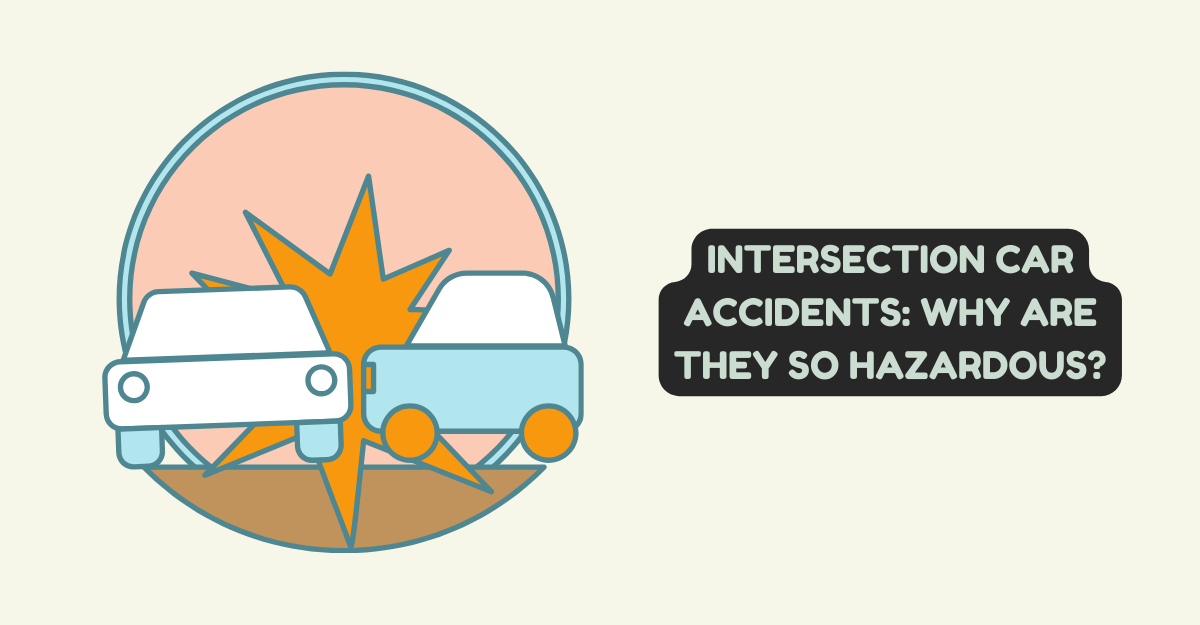
Intersection Car Accidents: Why Are They So Hazardous?
Intersections are a fundamental part of our roadways, allowing traffic to flow efficiently. But despite their necessity, they also represent one of the most dangerous zones for drivers, passengers, cyclists, and pedestrians. In the United States, over half of all car accidents occur at intersections. Understanding the reasons behind this alarming statistic can help us navigate these critical areas with greater caution. Additionally, intersections are prime locations for collisions leading to injuries in road accidents.
A Complex Traffic Environment
Unlike straightaways, intersections present a complex decision-making environment for motorists. Traffic flow converges from multiple directions, requiring drivers to assess various factors simultaneously. Here are some key reasons why intersections are so hazardous:
- Converging Traffic: Vehicles traveling in different directions must negotiate the right of way, leading to a higher chance of misjudgment and potential collisions. Left-turn accidents, for example, are particularly common due to the need to judge oncoming traffic and potential gaps for safe passage
- Blind Spots: The increased number of vehicles maneuvering at intersections creates more extensive blind spots for drivers. Large vehicles like trucks can obscure approaching cars or motorcycles, increasing the risk of accidents, especially for smaller vehicles and vulnerable road users like cyclists
- Varying Speeds: Traffic approaching an intersection often travels at different speeds. Drivers on the main road might be at highway speeds, while those on side streets may be entering at a slower pace. This variation in speed requires constant vigilance and the ability to react quickly to avoid collisions
- Distracted Driving: Unfortunately, distracted driving is a growing problem that is particularly dangerous at intersections. Texting, talking on the phone, or adjusting in-car entertainment systems diverts a driver’s attention from the critical task of navigating complex traffic flow
- Pedestrian and Cyclist Interaction: Intersections are also where car traffic interacts with pedestrians and cyclists. Drivers must be aware of crosswalks, designated turning lanes for bicycles, and potential jaywalkers to ensure the safety of everyone using the intersection
The Human Factor
Beyond the inherent complexities of intersections, human behavior also plays a significant role in accident statistics. Common causes include:
- Aggressive Driving: Speeding, tailgating, and failing to yield right of way are all aggressive driving behaviors that significantly increase the risk of accidents at intersections
- Impaired Driving: Driving under the influence of drugs or alcohol severely impairs reaction time and judgment, making intersections especially dangerous
- Disobeying Traffic Signals: Running red lights or failing to stop completely at stop signs are major contributing factors to intersection accidents
Safety Tips for Navigating Intersections
While intersections pose inherent risks, defensive driving practices can significantly decrease the likelihood of collisions:
- Minimize Distractions: Put away your phone, avoid eating or drinking while driving, and focus entirely on the road, especially when approaching intersections.
- Maintain Awareness: Scan your surroundings constantly, checking mirrors and blind spots to ensure you’re aware of all approaching traffic, pedestrians, and cyclists.
- Obey Traffic Signals: Come to a complete stop at stop signs and yield the right of way to vehicles with the right of way, even if the light seems to be changing.
- Use Turn Signals: Always use turn signals well in advance of turning or changing lanes to communicate your intentions clearly to other drivers.
- Adjust Speed: Reduce your speed as you approach an intersection, allowing more time to react to unexpected situations.
- Look Twice Before Crossing: Pedestrians and cyclists should also exercise caution at intersections. Make eye contact with drivers to make sure they see you before crossing, and use designated crosswalks and pedestrian signals whenever possible.






